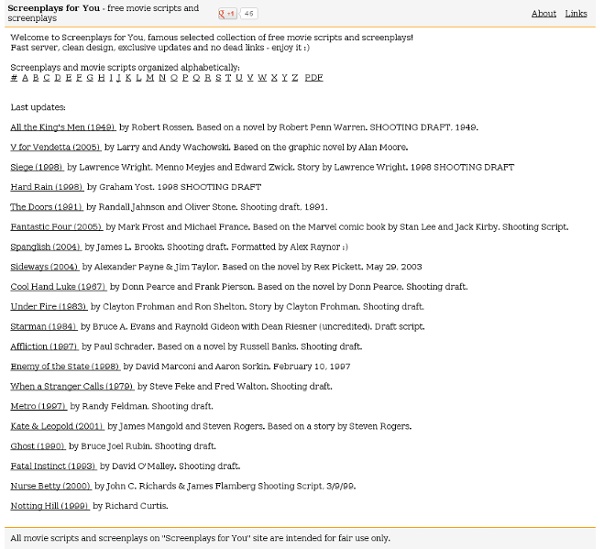



Movie Scripts and Screenplays Web Site Awesome Movie Scripts and Screenplays Making A Legendary Movie Trailer With iMovie On The iPad Movie Trailers are a great little creative project that makes putting together a professional looking video really easy. Jeffery wrote a tutorial before on how to make one using iMovie on the Mac, but I’ve been meaning to show you how to do the same using just your iPad (or iPhone). Today I’ll be using my iPad to make a trailer featuring myself and the mischievous little ferret that wandered into my house last week and decided to stay. Unfortunately, this isn’t possible on the original iPad – you’ll need an iPad 2 or the newest generation one; an iPhone 4 or later can also be used, but I’ll demonstrate with an iPad as it’s easier to work with the larger screen. Getting Started – Movie clips There are two ways to get the source video to be used in your project. Create your trailer Use the + button on the main screen, and then choose the type/theme of trailer to create. ScarySuperheroSwashbucklerRomanticRetroNarrativeFairytaleExpeditionBollywood Editing Blue areas are text that can be edited.
Ed Blog» Blog Archive Meet the Animator – Jessica Oreck talks to TED-Ed about the Mysteries of Vernacular « The mystery of pants finally solved. This week, TED-Ed is excited to roll out a featured mini-series all about the wacky way that words evolve. All those questions you have about the English language, where words come from, and why we say the things we do. Why do we drive in a parkway and park in a driveway? Why do we say that something is noisy? Why is a single pair of pants called pants and not pant? In the spirit of these histories, we’re diving deeper into the world of words with our new featured series, aptly named ‘Mysteries of Vernacular.’ For a taste of these Mysteries of Vernacular, here’s the story of the word Clue. TED-Ed caught up with animator and creator of Mysteries of Vernacular, Jessica Oreck, and asked her about the root of her obsession with word origins, animation, and which letter is the most troublesome of the bunch. 1. 2. I think my favorite so far might actually be Noise (to be released on Friday!). Building the Mysteries of Vernacular book. 3. 4. 5. L. 6. Dive in.
storyboards What is a storyboard? Once a concept or script is written for a film or animation, the next step is to make a storyboard. A storyboard visually tells the story of an animation panel by panel, kind of like a comic book. Your storyboard will should convey some of the following information: What charaters are in the frame, and how are they moving? Why make a storyboard? Creating a storyboard will help you plan your animation out shot by shot. How do I make a storyboard? Most commonly, storyboards are drawn in pen or pencil. Storyboard Language CLOSE-UP SHOT: A close range of distance between the camera and the subject. Storyboard Examples From the Jane Animation Project - Hunting Sequence A simple storyboard made using stick figures A storyboard for a TV Western More Links Acting With A Pencil Famous Frames - Storyboards from Hollywood movies